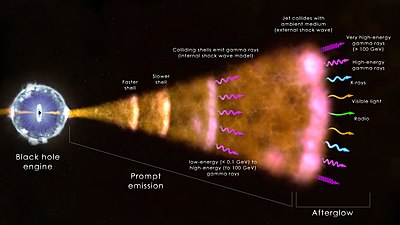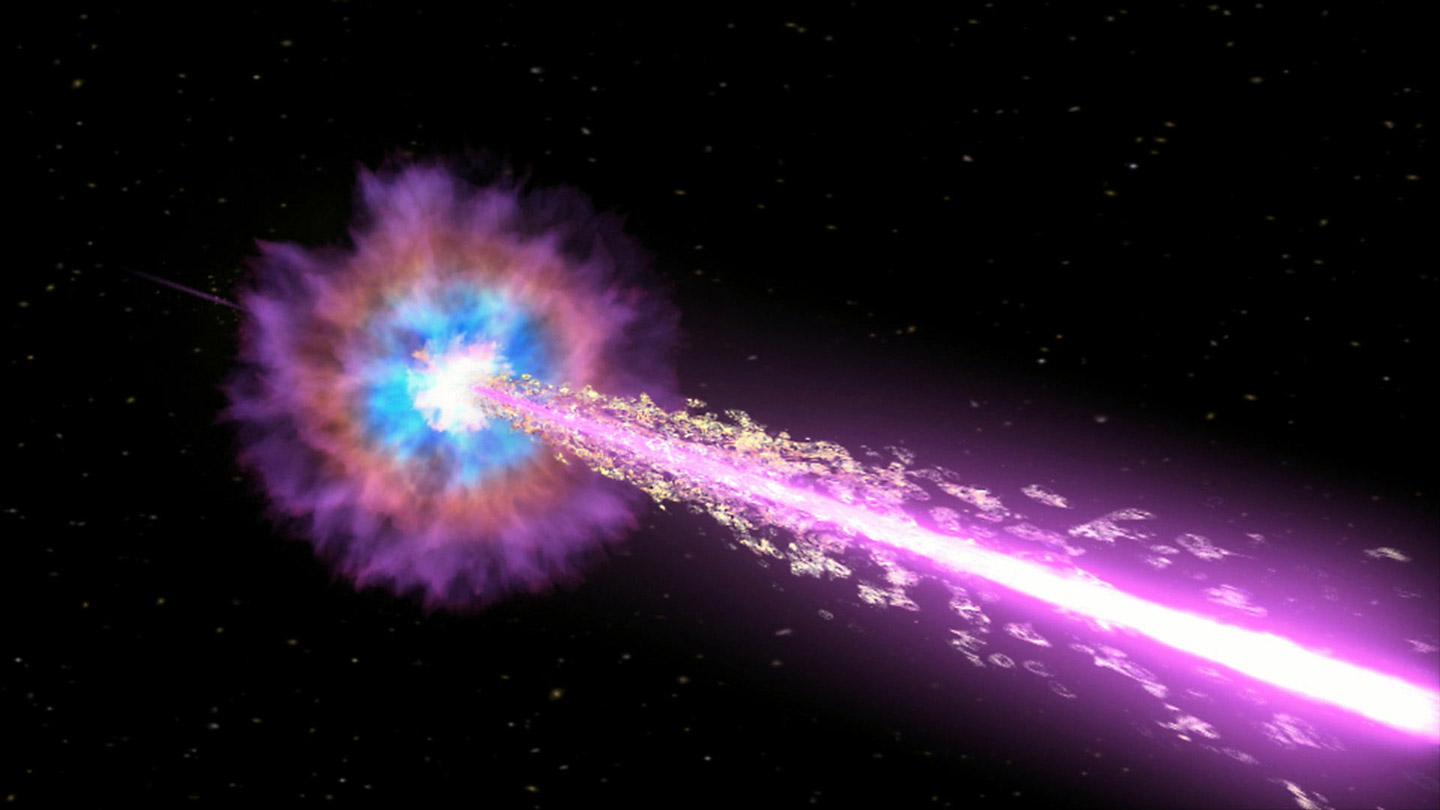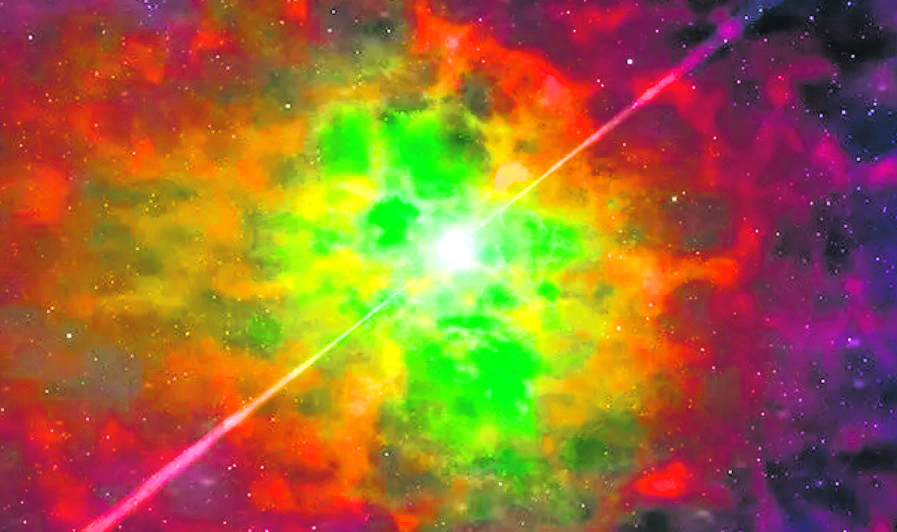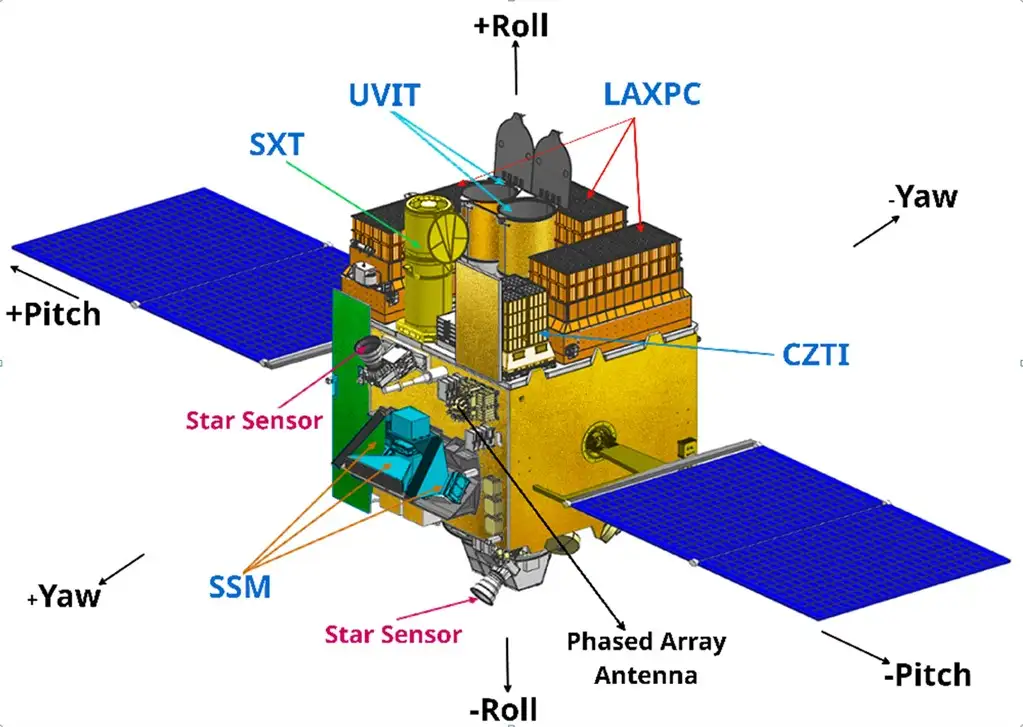Overview
ISRO’s AstroSat has hit a significant milestone, uncovering over 600 gamma-ray bursts since its launch in 2015. This achievement marks a noteworthy moment for India’s space exploration, as AstroSat’s space telescope continues contributing to our understanding of the universe.
Gamma-ray bursts, whether signalling the demise of massive stars or the merging of neutron stars, hold crucial insights into cosmic events. AstroSat is India’s first satellite exclusively devoted to astronomy.
What are Gamma-ray bursts?
Gamma-ray bursts (GRBs) are like cosmic dynamites. These fleeting bursts of high-energy light are born out of some of the most explosive occurrences in space, such as the birth of black holes or the collisions between neutron stars.
Their intensity is mind-boggling—lasting mere milliseconds to several minutes, GRBs can outshine even the most dazzling supernovae hundreds of times, according to NASA.

Picture this: GRBs can blaze as brilliantly as a million trillion suns during their eruption, making them a fleeting but incredibly luminous spectacle. For that brief moment, when a GRB lights up the cosmic stage, it claims the title of the brightest source of electromagnetic radiation in the entire observable universe.
AstroSat detects 600th Gamma-Ray bursts.
Launched in 2015 by the Indian Space Research Organisation (ISRO), AstroSat exceeded its intended design life of five years and remains in good health, actively contributing to astronomers’ observations.
AstroSat, India’s first dedicated multi-wavelength space observatory, boasts a suite of payloads allowing simultaneous observations of celestial objects across various wavelengths, from ultraviolet to X-rays.

Dipankar Bhattacharya, the principal investigator for CZTI, conveyed his enthusiasm, emphasising that the detection of the 600th GRB serves as a great demonstration of the sustained and undiminished performance of the Cadmium Zinc Telluride Imager (CZTI). He highlighted that this impressive performance persisted eight years after the launch, surpassing its intended design lifetime.
Waratkar remarked that it was amazing to examine the data and have the opportunity to be the first one to view these explosions that occurred billions of years ago. He noted that since the 600th GRB, the CZTI had detected three more such events, with the latest occurring on Monday.
Varun Bhalerao, the associate professor at IIT-Bombay, conveyed his pride in AstroSat’s accomplishments, saying, “We are proud of what AstroSat has accomplished.” He mentioned that various institutes had collaborated to capitalise on this success and had suggested the construction of Daksha. He said this next-generation GRB space telescope would surpass any satellite globally. He further stated that Daksha’s sensitivity would enable it to detect in just over a year what CZTI had achieved in eight.

The 600th GRB detection by AstroSat’s CZTI detector occurred on November 22, with the information promptly shared with astronomers worldwide. This data offers valuable insights into extreme conditions associated with these high-energy events, facilitating research on the phenomenon.
The detection of these GRBs has led to the publication of science results from various instruments on AstroSat, with over 400 peer-reviewed research articles showcasing the valuable
contributions to our understanding of these cosmic phenomena.
What is AstroSat?

AstroSat is India’s inaugural Space Astronomy Observatory, taking to the skies on September 28, 2015. Launched into a 650-km orbit with a 6° inclination, it weighed 1515 kg at liftoff, propelled by the PSLV-C30 (XL) rocket from Satish Dhawan Space Centre Sriharikota.
The mission marked a significant leap in space exploration, equipped with five scientific payloads. These payloads facilitate imaging and the study of temporal and spectral properties of cosmic sources, both within our galaxy and beyond, across a broad spectrum of wavelengths. This multi-functional platform is pivotal for advancing our understanding of the universe.
Some Noteworthy Discoveries by AstroSat
- India’s ASTROSAT made a historic discovery by detecting FUV photons from the Lyman Alpha emitting galaxy AUDFs01, located 9.3 billion light years away.
- ASTROSAT’s UVIT led a deep survey of the Andromeda galaxy. It revealed the first detection of young main-sequence stars in its bulge outside the nucleus. It produced a UVIT point source catalogue of 75,000+ sources in NUV/FUV.
- The CZTI made groundbreaking discoveries, including X-ray polarisation from the off-pulse region of the Crab pulsar and polarised prompt emission from gamma-ray bursts (GRB). These findings prompted global theoretical investigations into GRB radiative properties.
- AstroSat detected and characterised star formation in Jellyfish galaxies, revealing new stars forming in outflowing gas streams outside the galaxies. This provides insights into gas-gas interactions in galaxy clusters and star formation processes.
- LAXPC and SXT observations of 4U 1630-17 revealed that the black hole in the binary is rotating at a speed close to the maximum possible spin speed.











